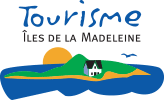

Pointe de l'Est National Wildlife Area is a vast expanse of sand originally deposited by sea currents, shaped and moulded by the wind and now covered with forest. Its numerous ponds and marshes are home to a considerable number of bird species. The National Wildlife Area in Grosse-Île represents the remains of an ecosystem unlike any other in Québec. Its 684 hectares, with typical dune vegetation, many ponds and a forest of stunted trees include all the typical elements of the Îles de la Madeleine landscape. A wide variety of bird species can be found here, and it is an important staging area for many species of ducks and shore birds.
Observation from the top of the cliffs. Inside the Area, two interpretive trails lead you into areas where you can observe typical dune vegetation and bird life: La Camarine (Black Crowberry) and L'Échouerie (Haulout Beach Trail). There is no charge for access to these trails, and you do not need a guide to enjoy hiking over their 4.5 km length. The Auberge La Salicorne offers weekly guided hikes during the summer. It is absolutely essential to wear sturdy walking shoes. The best time for exploring these trails is in May and June and during the fall.
Some interesting species present (among others): Horned Grebe (Podiceps auritus), Black-headed Gull (Larus ridibundus), Arctic Tern (Sterna paradisaea), American Bittern (Botaurus lentiginosus), Sora (Porzana carolina), Wilson's Snipe (Gallinago delicata), Virginia Rail (Rallus limicola) and Whimbrel (Numenius phaeopus). In the forest, you will find Yellow-rumped Warbler (Dendroica coronata), Blackpoll Warbler (Dendroica striata), Swainson's Thrush (Catharus ustulatus), Rusty Blackbird (Euphagus carolinus), Fox Sparrow (Passerella iliaca) and White-throated Sparrow (Zonotrichia albicollis). Please note that the best time for these observations is in May and June.
At the Old Harry wharf you will be able to observe Black Guillemots (Cepphus grylle), Northern Gannets (Sula bassanus) and Common Eider (Somateria mollissima). Harlequin Ducks (Histrionicus histrionicus) have also been reported there. During the winter, this wharf is an exceptional observation point for Black Guillemots (Cepphus grylle), Oldsquaw (Clangula hyemalis), Red-breasted Merganser (Mergus serrator), Purple Sandpiper (Calidris maritima) and Dovekie (Alle alle).
Between the village of Grosse-Île and Old Harry, there are two access points along Route 199 for the East Point trails. Parking is available at both sites.